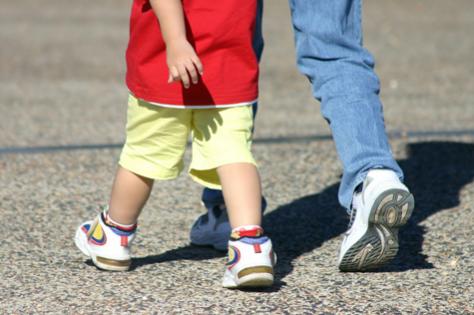Choosing the right shoes for children is an important aspect for their growth and development. According to expert shoe fitters, making sure that your child's shoes are correctly fitted will help avoid damage to little feet that often do not become evident until later in life.
Graeme Wheaton, Product Developer at Betts Kids, says that with more and more shoe purchases made online, there is a risk for kids who may end up with the badly fitting shoes. He believes it is important for parents to know how a shoe should fit correctly to ensure their kids are not wearing the wrong shoes for hours and hours every day.
These 7 tips from Graeme are designed to help parents know what they're looking for when it comes to children's shoe purchases.
1. Heel Grip Test
With the child seated, pull on the heel of the shoe firmly to ensure minimal 'heel slippage' occurs.
2. Width
Make sure the show shape fits and suits the foot shape. The shoe should be broa enough and deep enough. If you can see the outline of the child's foot pressing against the shoe, they are probably the wrong fit. Feel for excess pressure on the little toe when the hild is standing.
3. Depth
Make sure there is enough depth by pulling your thumb across the top of the shoe. You should feel a small ripple but not a large pleat or crease. Remember, too, many creases equal too much depthy.
4. Length
Feel for the longest toe - this sometimes may not be the big one. If you cannot feel the toes, ask the child to wiggle them for you.
For infant shoes, allow for a little finger width of room from the largest toe to the front of the shoe. For junior shoes, allow for an index finger width of room from the largest toe to the front of the shoe. For shoes for older kids, allow for a thumb's width of room. This test should be done while the child is standing and the feet are spread naturally and the toes flat.
5. Back
Check the shoe fits snugly around the heel. Padded toplines provide additional comfort around the heel and ankle.
6. Fastening
Lace-up and Velcro shoes offer adjustment options. Shoes should be fastened to provide a firm grip around the child's foot. If a buckle is present, there should be additional holes for adjustment.
7. Walking
Lastly, the child should walk in the shoes inside (preferably on carpet). Check that your child walks well and comfortably in the shoes and that there is minimal heel slippage.



















__small.png)










